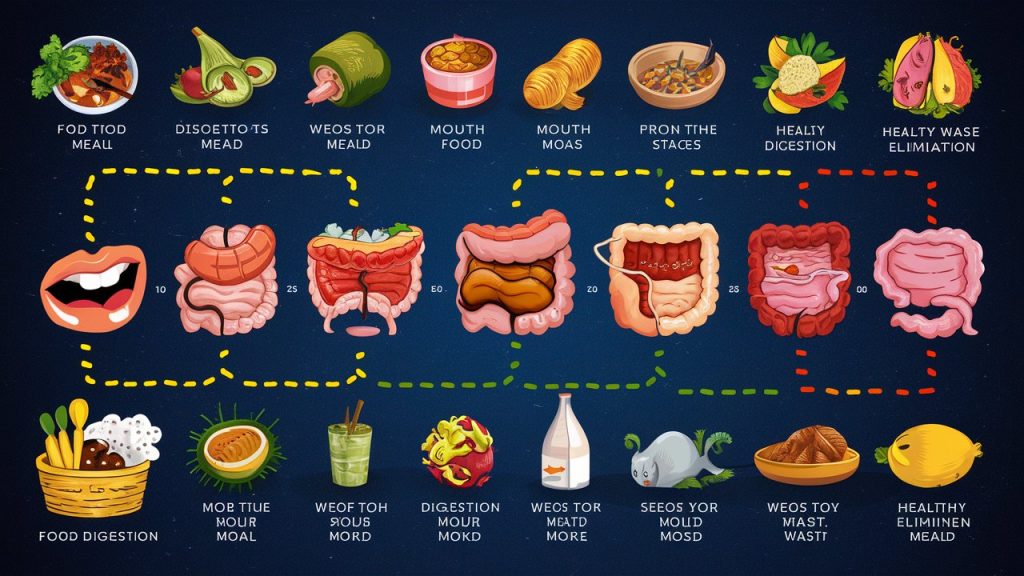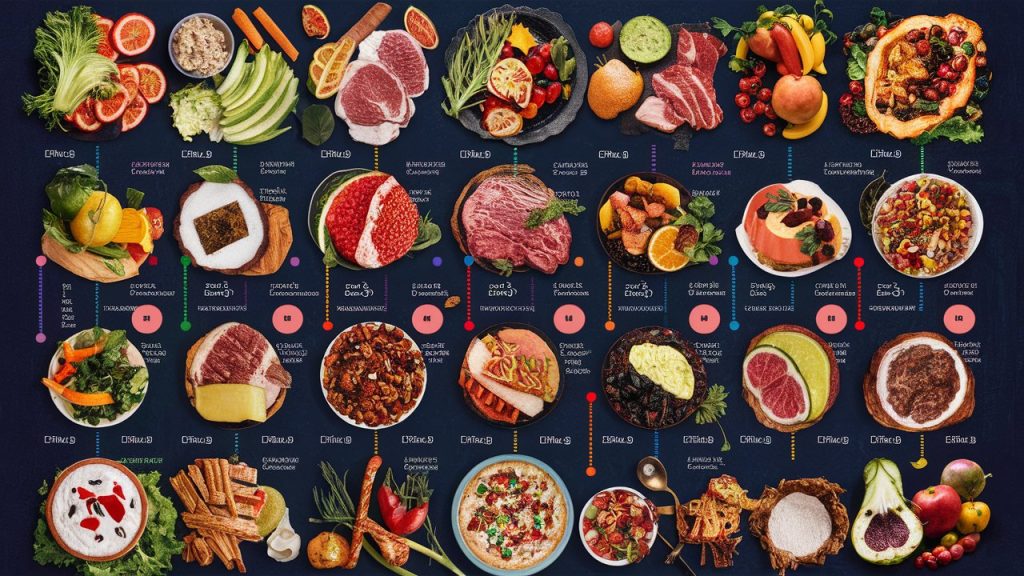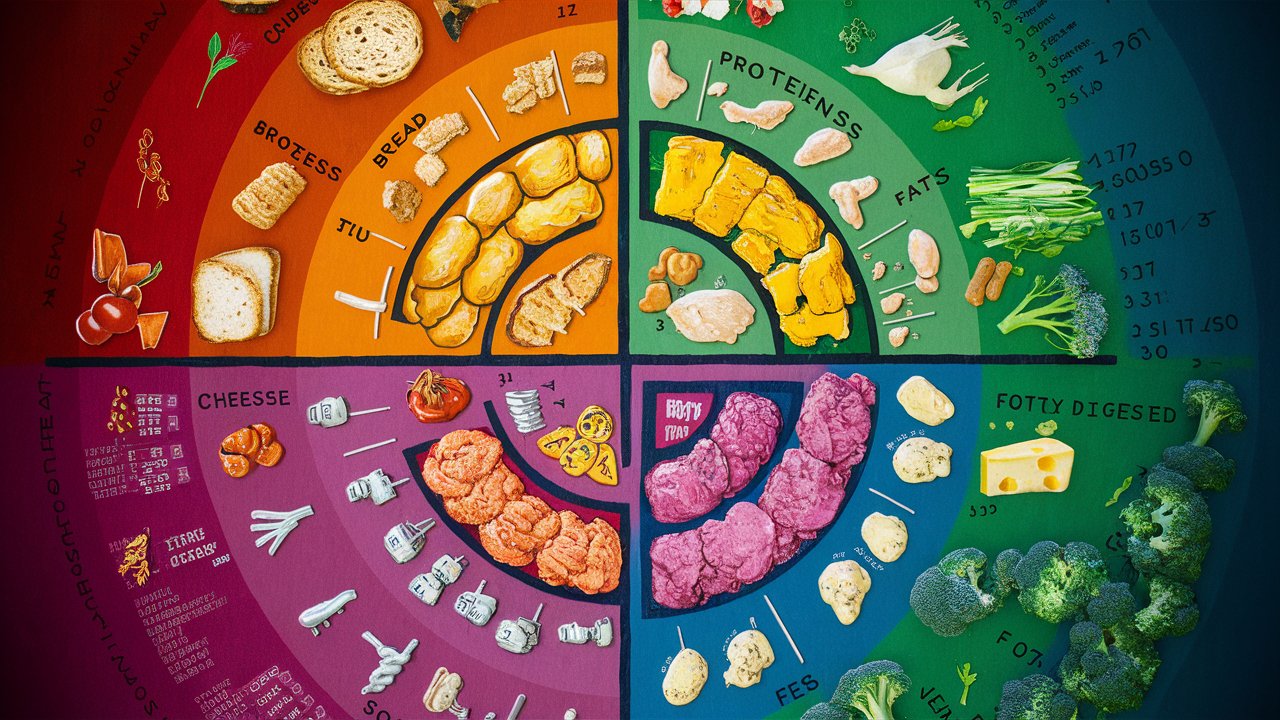Table of Contents
Understanding how long different foods digest can transform your health and well-being. The food digest time chart is a valuable tool that reveals how various foods move through your digestive system. This information can help you make informed choices about what to eat and when leading to better digestion and overall health. In this article, we’ll explore the food digest time chart in detail, uncovering how it can help you optimize your diet and enhance your digestive health.
What Is a Food Digest Time Chart?

Definition and Purpose
A food digest time chart shows how long it takes for different foods to pass through your digestive system. This chart categorizes foods based on their digestion times, helping you understand how quickly or slowly they are processed. The primary purpose of this chart is to provide insights into how various foods affect your digestion and to help you plan your meals for better digestive health. Knowing these times allows you to make smarter food choices and avoid discomfort.
How the Chart is Used
The food digest time chart plans meals based on digestion rates. For instance, if you’re looking for a quick energy boost, you might choose foods that digest quickly. Conversely, if you need sustained energy, you might opt for foods that take longer to digest. The chart helps you balance your meals and snacks according to how they impact your digestive system, promoting better health and comfort.
How Long Do Different Foods Take to Digest?
Fast-Digesting Foods
Fast-digesting foods are typically simple carbohydrates and some fruits and vegetables. Examples include:
- Fruits: Watermelon and grapes usually digest quickly within 30 minutes to an hour.
- Vegetables: Leafy greens and bell peppers also have a short digestion time, generally between 30 minutes and 1.5 hours.
These foods are ideal for quick energy but might not keep you full. Knowing their digestion times can help you plan your meals for sustained energy.
Medium-Digesting Foods
Foods that are digested at a moderate pace include:
- Grains: Foods like brown rice and oats take 2 to 3 hours to digest.
- Proteins: Lean meats and tofu typically digest within 2 to 4 hours.
These foods offer a balance of quick and lasting energy, making them suitable for meals that need to keep you satisfied without causing discomfort.
Slow-Digesting Foods
Slow-digesting foods are usually higher in protein and fat. Examples include:
- Nuts and Seeds: Almonds and chia seeds can take 4 to 6 hours to digest.
- Red Meat: Beef and pork generally take 4 to 6 hours to pass through your system.
These foods provide lasting energy but can cause bloating if consumed in large quantities or eaten too close to bedtime. Managing your intake based on digestion times can help you avoid discomfort.
Also read: Traditional Food for Italy: Savor the Authentic Flavors of Italy
Benefits of Understanding Food Digest Times
Improved Meal Planning
Understanding how long different foods take to digest allows you to plan your meals more effectively. For instance, if you have a busy day, you might choose fast-digesting foods for breakfast to boost your energy. For a long workday, medium-digesting foods might keep you full and focused. This knowledge helps you tailor your meals to your daily schedule and needs.
Better Digestive Health
Knowing the digestion times of various foods can help you avoid digestive issues such as bloating, gas, and discomfort. By choosing foods that align with your digestive needs, you can reduce the likelihood of these problems. For example, eating slowly digesting foods before bed can prevent late-night digestive issues.
Enhanced Energy Levels
Timing your food intake based on digestion can enhance your energy levels throughout the day. Consuming quick-digesting foods before or after exercise can provide immediate energy, while medium and slow-digesting foods can offer sustained energy for extended periods. This balance helps you maintain consistent energy levels and perform better daily.
Tips for Using the Food Digest Time Chart
Pair Foods Wisely
Pairing foods based on their digestion times can optimize your meals. For example, combining fast-digesting fruits with medium-digesting grains can provide quick energy and lasting satisfaction. Avoiding heavy, slow-digesting foods close to bedtime can help prevent sleep disturbances.
Listen to Your Body
While the food digest time chart is valuable, listening to your body is essential. Indlistening your body is vital for age, metabolism, and overall health. How do different foods make you feel? Adjust your diet accordingly.
Experiment and Adjust
Try a variety of cuisines and meal times to see what suits you the best. Use the food digest time chart as a starting point and adjust based on your personal experience. This trial-and-error approach will help you fine-tune your diet for optimal digestion and health.
Common Misconceptions About Food Digestion

All Foods Digest at the Same Rate
One common misconception is that all foods digest at the same rate. In reality, different foods have varying digestion times. Understanding these differences can help you make more informed dietary choices and improve your digestive health.
Digestion Times Are the Same for Everyone
Another misconception is that digestion times are the same for everyone. Individual factors such as metabolism and digestive health can affect how quickly or slowly foods digest. Considering these personal differences when using the food digest time chart is essential.
The food digest time chart is a powerful tool for enhancing your digestive health and overall well-being. Understanding how long different foods take to digest, you can make better choices about what to eat and when. This knowledge helps with meal planning, improves digestion, and boosts energy levels. As you explore the benefits of the food digest time chart, remember that individual variations exist, so listening to your body and adjusting your diet is essential. With this information, you’re on your way to unlocking the secrets to better digestion and enjoying a healthier lifestyle.

